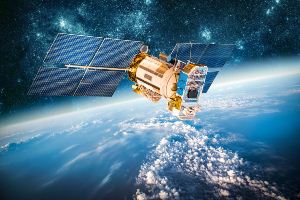
The evolution of satellite technology: From Sputnik to Starlink
The first satellite launched by the Soviet Union in 1957, Sputnik 1, ushered in both the space age and the satellite age, sparking decades of radical change in space exploration that has also revolutionised communication, navigation and global connectivity. More important to our daily lives than ever before, satellite systems such as Starlink promise to bring a revolution in connectivity all around the globe.
The early years: Sputnik and the space race
The Soviet launch of Sputnik 1 on 4 October 1957 – the world’s first space satellite – sent periodic pulses of radio waves back to Earth. More than just a matter of prestige, Sputnik demonstrated that we could, indeed, use space. Thus began the space race. A few days later, on 30 October 1957, the US launched Explorer 1. Then came the National Aeronautics and Space Agency (NASA).
Advances in communication technologies and military systems were both significant drivers of early spaceflight. In 1960, TIROS-1, the first successful weather satellite, offered meteorologists vastly improved sources of data. Then, that same year, the first successful communication satellite, named Telstar 1, broadcast television across the Atlantic Ocean, a step forward in the possibility of using satellites to radically alter the paths of global communication.
Advancements in satellite technology: The 1970s to 1990s
The following years witnessed innovation in space satellite technology: in the 1970s, geostationary satellites were launched, travelling at the same speed as the Earth’s rotation, and therefore appearing stationary with respect to the Earth.
The following years witnessed innovation in space satellite technology: in the 1970s, geostationary satellites were launched, travelling at the same speed as the Earth’s rotation, and therefore appearing stationary with respect to the Earth.
The first Earth-observation satellite — Landsat 1 — was launched in 1972, and the ability to image the Earth from space at high resolution is now increasingly relied upon for environmental monitoring, agriculture and urban planning.
During the 1980s and ’90s, global positioning systems (GPS) came online. The US Department of Defense’s NAVSTAR GPS became fully operational in 1995, and the satellite-based navigation system transformed navigation, military operations and every industry that requires precise location data.
The modern era: High-speed internet and beyond
By the dawn of the 21st century, satellites began to drive global communications as never before. The need for high-speed internet access led to large constellations of satellites.

Perhaps the most important development is SpaceX’s Starlink project, announced in 2018. Over time, Starlink aims to deploy thousands of low Earth orbit (LEO) satellites to provide high-speed, low-latency internet connectivity virtually everywhere in the world. LEO satellites orbit much closer to Earth than the traditional geostationary satellites used for telecoms purposes and hence provide lower latency and internet speeds.
By 2024 the company had launched more than 3,000 satellites and plan to increase that to 12,000 or more. When the constellation is complete, it has the potential to also narrow the digital divide, providing reliable, high-speed access to communications and the internet for people in remote areas and developing countries with poor or no traditional infrastructure. In addition, it would also allow IoT sensing applications to expand to nearly anywhere on Earth.
Impact on communication, navigation and space exploration
The development of satellite technology has made a significant impact on people’s lives. A lot of the developments in transport have been based on the use of satellite technology. There has been an improvement in people’s living standards, such as provision of satellite-based safety systems. The use of satellites in entertainment has led to a significant impact on people’s lives. Culture and many arts have progressed, thanks to satellite technology. The construction industry has also embraced the use of satellite technology, which has had a positive impact on people’s lives. In conclusion, the advancement in technology and living standards has been achieved at least partly through the use of satellite technology.
The world now communicates instantly on a global scale through satellites, which enable the sending of data from anywhere in the world and the instantaneous transmission of information across oceans. Without satellites, the world of immediate and online communication would not exist and countries in remote regions of the world could not join in information transfer. Satellites drive your map and location apps, and bring real-time transit updates. They’re the basis for all locational services, just like they’re crucial to public safety, from your taxi to 911.
Space exploration would be impossible without satellites, which collect atmospheric data on planetary bodies, monitor space weather and support missions to the Moon, Mars and beyond.

The future of satellite technology
Looking forward, satellite technologies will continue to progress as small-satellite technologies and improved propulsion systems and artificial intelligence make satellites more capable. Meanwhile, new technologies such as quantum communication via satellite could ultimately transform secure communications. Just recently Starlink has announced the first successful video call via its satellite network, which is another meaningful step towards a more connected future.
To sum up: from the Sputnik 1 to the Starlink, satellite technology has and will continue to change the world.




